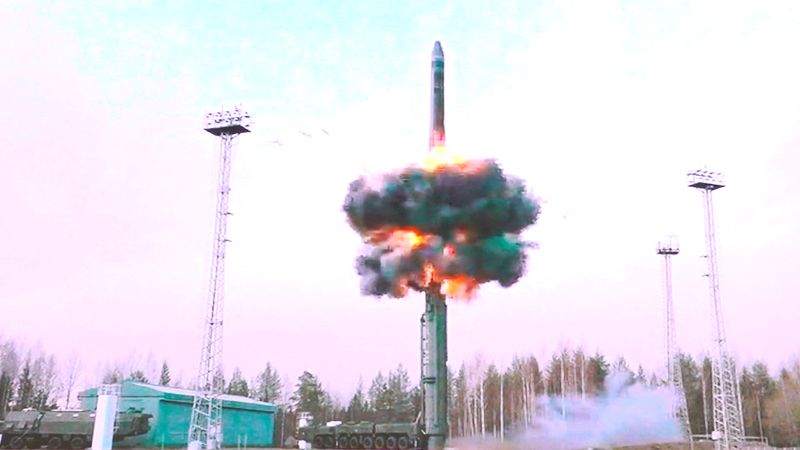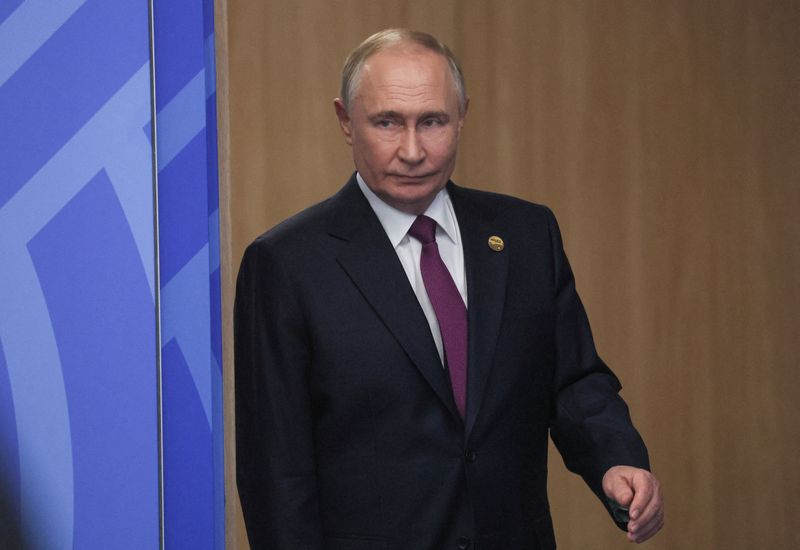By Guy Faulconbridge and Mark Trevelyan
MOSCOW (Reuters) - Russia test-fired missiles over distances of thousands of miles on Tuesday to simulate a "massive" nuclear response to an enemy first strike.
"Given the growing geopolitical tensions and the emergence of new external threats and risks, it is important to have modern and constantly ready-to-use strategic forces," President Vladimir Putin said as he announced the exercise.
It took place at a critical moment in the Russia-Ukraine war, after weeks of Russian signals to the West that Moscow will respond if the United States and its allies allow Kyiv to fire longer-range missiles deep into Russia.
On Monday NATO said that North Korea has sent troops to western Russia, something Moscow has not denied.
In televised comments, Defence Minister Andrei Belousov told Putin that the purpose of the drill was to practise delivering "a massive nuclear strike by strategic offensive forces in response to a nuclear strike by the enemy".
The exercise involved Russia's full nuclear "triad" of ground-, sea- and air-launched missiles.
A Yars intercontinental ballistic missile was launched from Plesetsk cosmodrome in northwest Russia to Kamchatka, a peninsula in the far east. Sineva and Bulava ballistic missiles were fired from submarines, and cruise missiles were launched from strategic bomber planes, the defence ministry said.
The 2-1/2-year-old war is entering what Russian officials say is its most dangerous phase as the West considers how to shore up Ukraine while Russian forces advance in the east of the country.
Putin said using nuclear weapons would be an "extremely exceptional measure".
"I stress that we are not going to get involved in a new arms race, but we will maintain nuclear forces at the level of necessary sufficiency," he said.
He added that Russia was moving to new "stationary and mobile-based missile systems" which have a reduced launch preparation time and could overcome missile defence systems.
The drill follows an Oct. 18 exercise in the Tver region, northwest of Moscow, involving field movements by a unit equipped with Yars intercontinental ballistic missiles, capable of striking U.S. cities.
NUCLEAR SIGNALS
Since the start of the war, Putin has sent a series of pointed signals to the West, including by changing Russia's position on major nuclear treaties and announcing the deployment of tactical nuclear missiles to neighbouring Belarus.
Ukraine has accused him of nuclear blackmail. NATO says it will not be intimidated by Russian threats.
Last month the Kremlin leader approved changes to the official nuclear doctrine, extending the list of scenarios under which Moscow would consider using such weapons.
Under the changes, Russia would consider any assault on it supported by a nuclear power to be a joint attack - a warning to the United States not to help Ukraine strike deep into Russia with conventional weapons.
Putin has said that Russia does not need to resort to the use of nuclear weapons in order to achieve victory in Ukraine.

Russia is the world's largest nuclear power. Together, Russia and the U.S. control 88% of the world's nuclear warheads.
U.S. officials say they have seen no change to Russia's nuclear deployment posture during the war. But the United States in 2022 was so concerned about the possible use of tactical nuclear weapons by Russia that it warned Putin over the consequences of using such weapons, according to Central Intelligence Agency Director Bill Burns.
